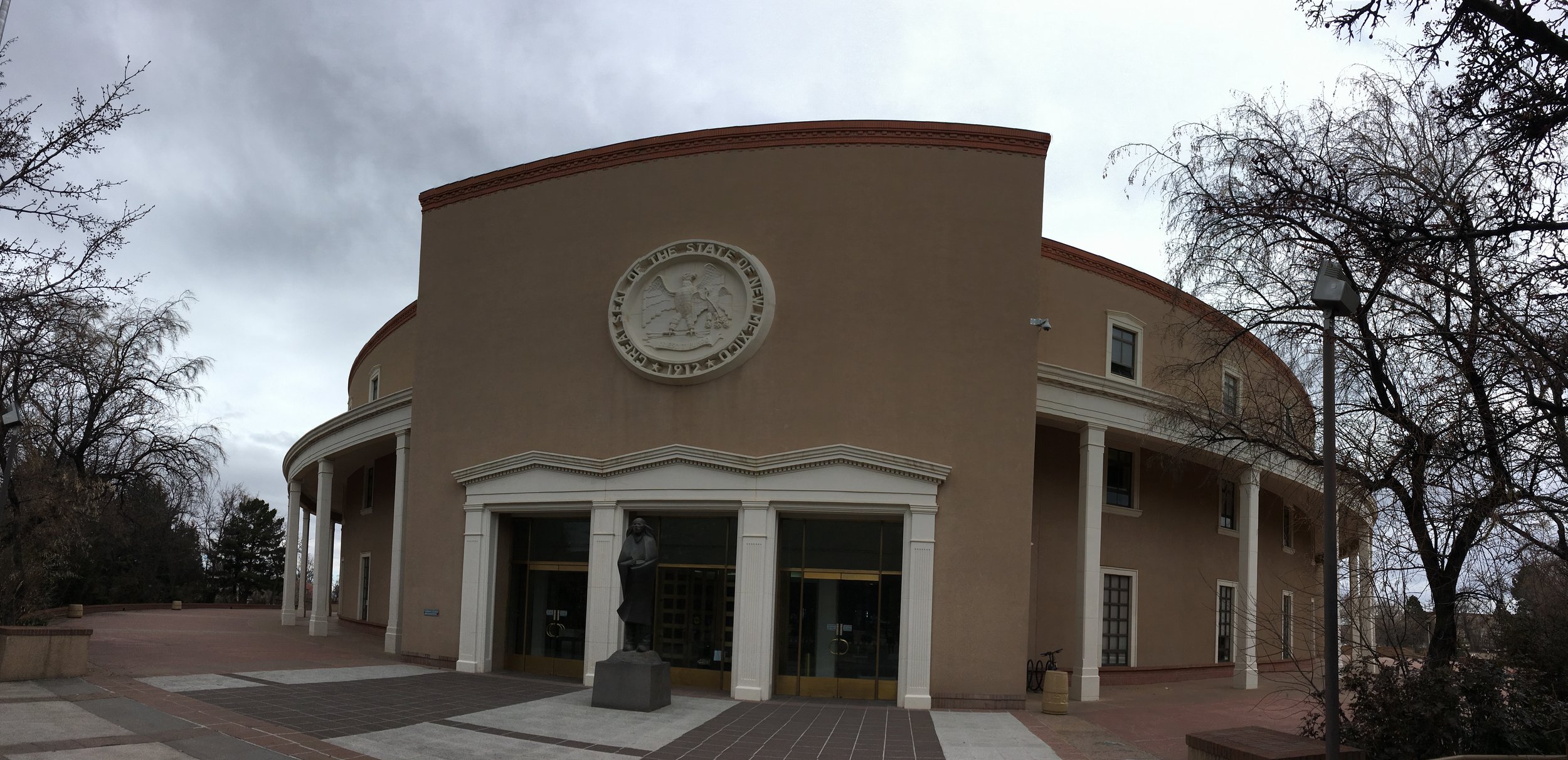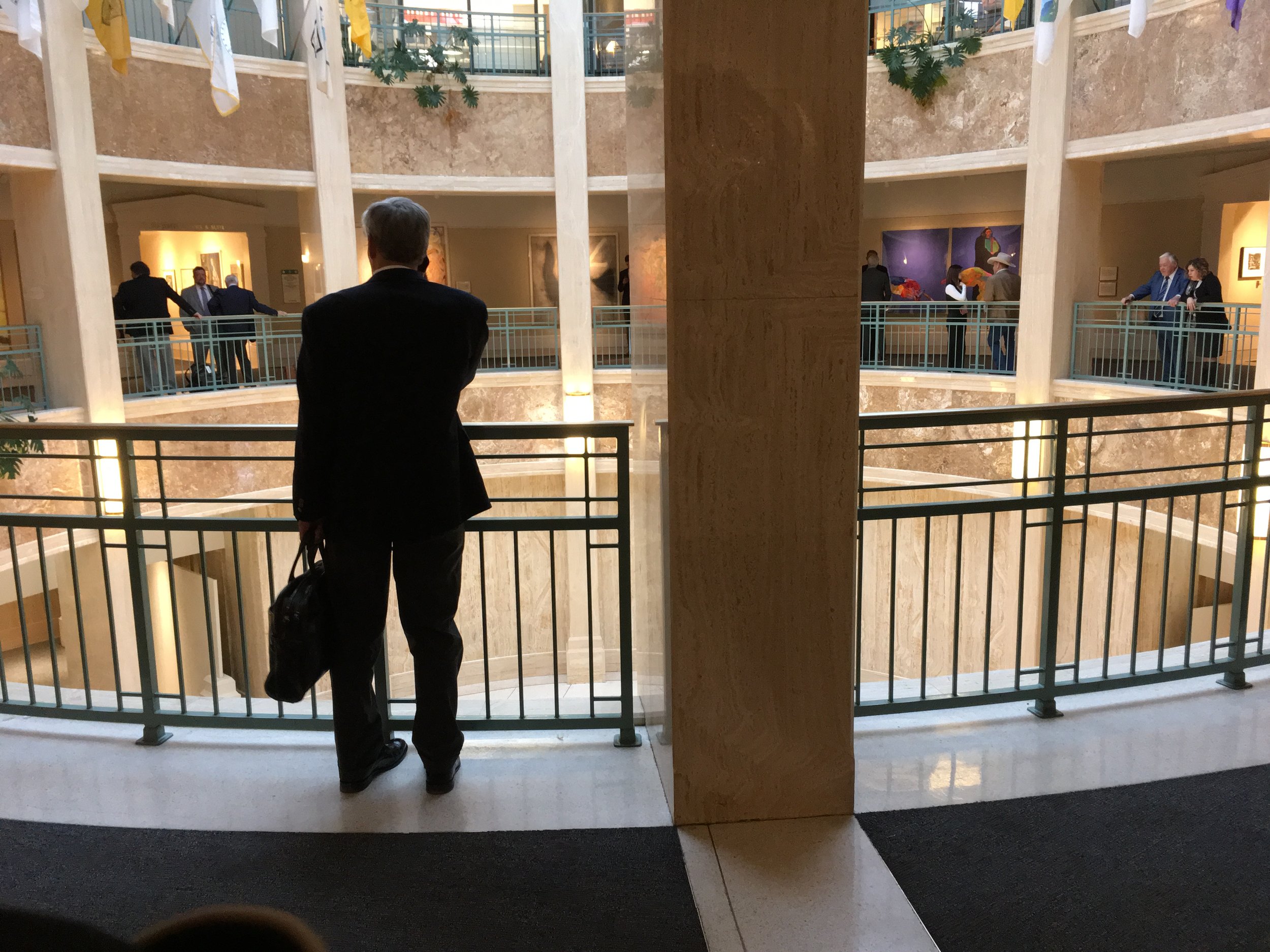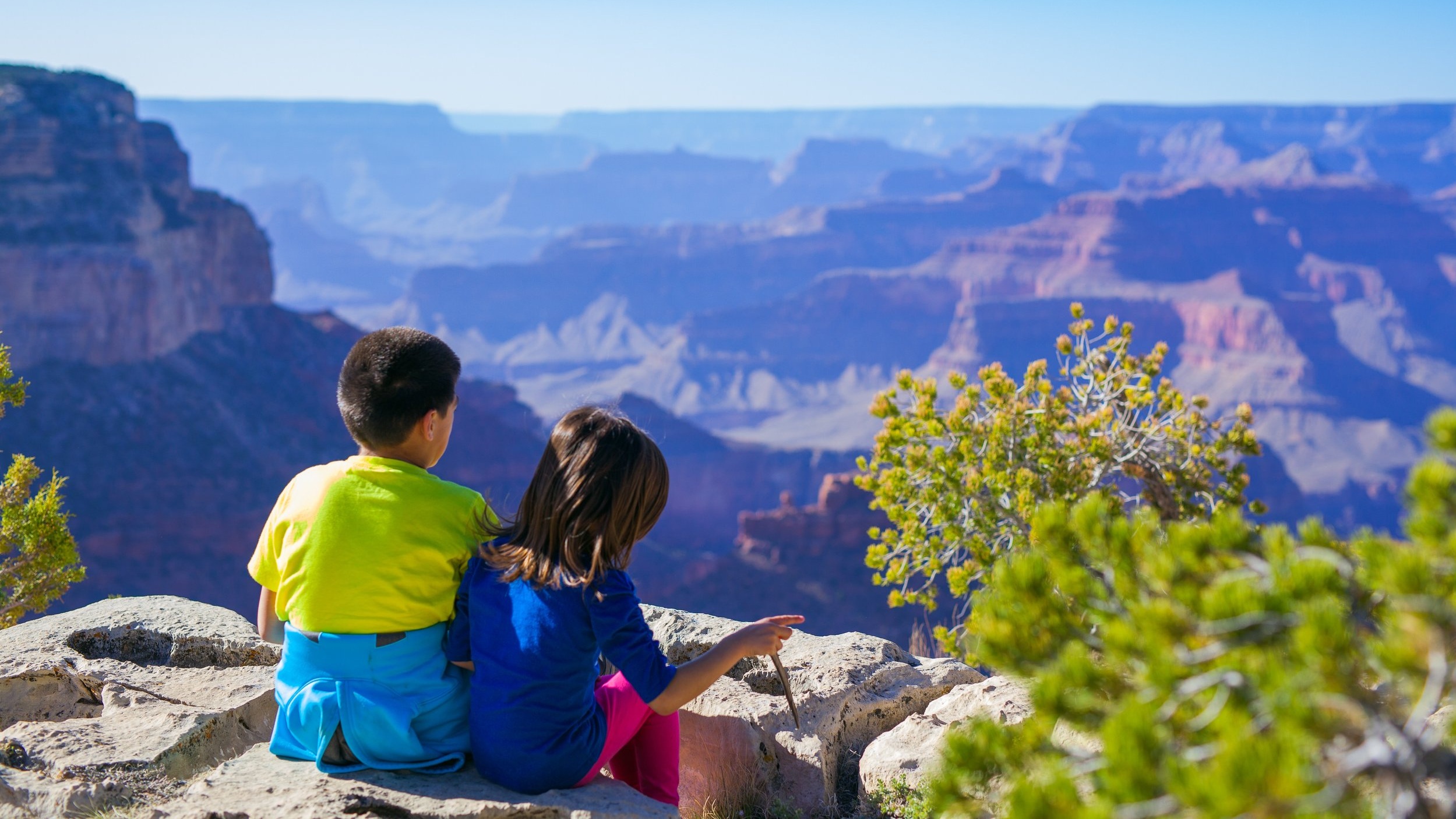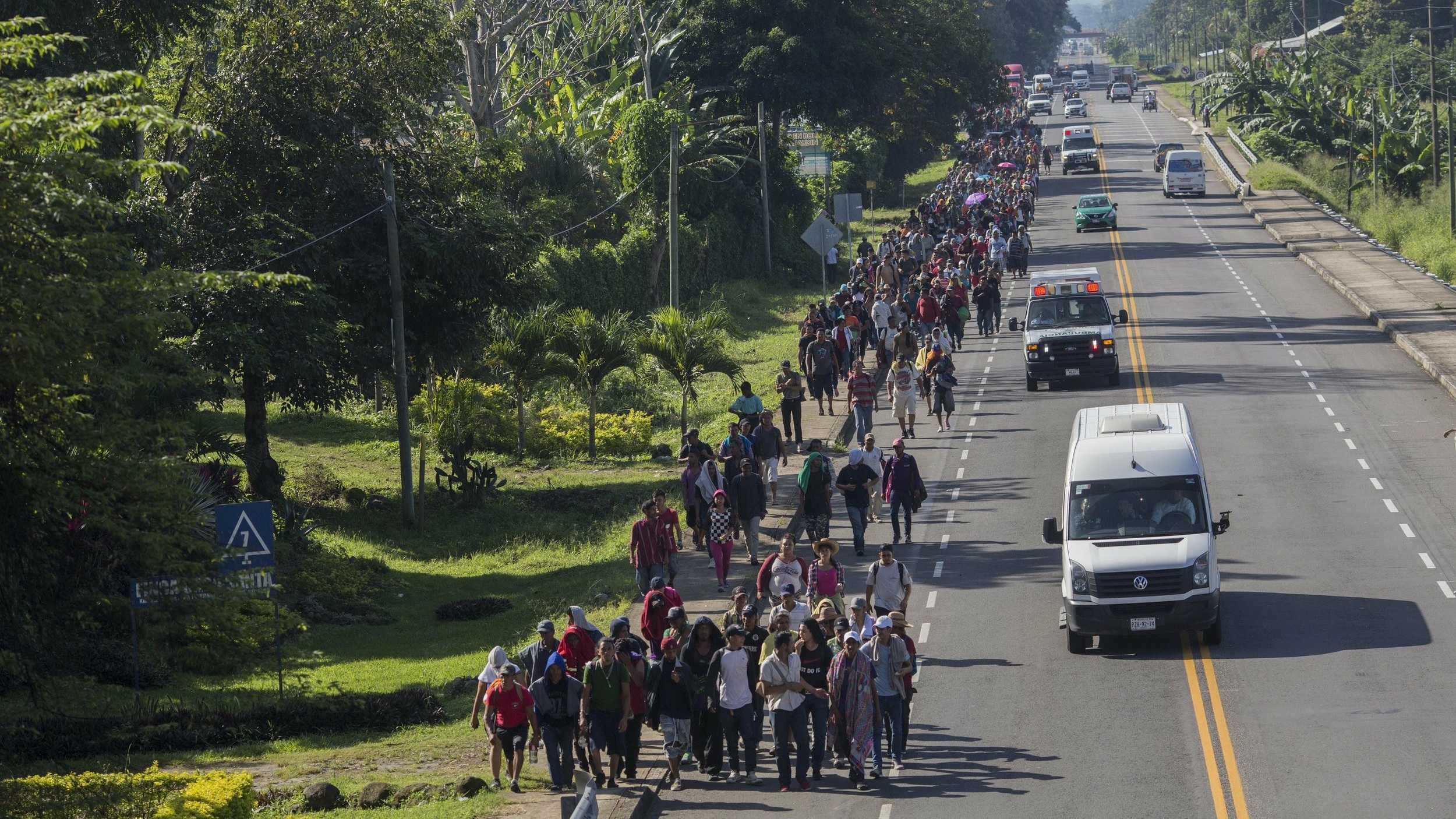I arrived at the Roundhouse about half an hour before the New Mexico House of Representatives was scheduled to convene. The lobby and central rotunda were bustling with people when I strolled through—legislators, aides, lobbyists, reporters, activists.
There were also school groups taking tours in every direction. In one hallway I got cornered between two groups of elementary schoolers and smiled when one of their harried teachers asked if they were in my way. No, I joked, I was happy to overhear some of their guide’s presentation! She looked vaguely exasperated; I guess I was the one in their way. I slipped my way through the kids and past them to the House chambers. The gallery overlooking the floor was mostly empty, so I took a seat up at the front.
The floor below was mostly empty, too. Representatives were still scattered across the building in various conference rooms, concluding the morning’s committee meetings. It would take a while for them to trickle in and take their seats. Meanwhile, more school groups came and went behind me, so I was still able to overhear bits of their tours.
The Roundhouse is New Mexico’s fifth capitol, built from 1960 to 1965, first used 1966.
The building is round in honor of the shape of the Native American structures that have been in the region going back at least a thousand years, Pueblo kivas. Kivas are very special ceremonial buildings where important community gatherings take place. The House and Senate chambers are sunk into the ground in imitation of kivas’ sunken structures.
The House is the larger of the Roundhouse’s two sides, the smaller being the Senate, which is where we’ll go next—single file, be sure your shoes are tied.
Over the next twenty minutes or I also heard intermittent explanations of the Zia symbol on the state flag, which is taken from Zia Pueblo iconography, and the Great Seal of the State of New Mexico, in which a large American bald eagle overshadows a smaller Mexican eagle while clutching three arrows in its talons, one for each of the state’s three principal Native peoples: the Pueblos, Navajos, Apaches.
Between eavesdropping, I gazed down at the House floor, where representatives would shortly be seated at long desks arcing around the raised seats of the Speaker and Clerk. Each legislator’s seat was marked by a large name plaque and a little panel of buttons.
Those buttons are how they cast their votes. They’re wired to a central system that’s in turn linked to large black screens at the front of the chamber. The screens lists the representatives’ names and, eventually, depending on whether they press the red or green buttons before them, will display whether they voted yea or nay for each measure.
Eleven o’clock came and went, and the House wasn’t yet called to session. I found myself zoning out as I waited, mesmerized more and more by those buttons…
Those precious dice-sized cubes of color waiting to be pressed…
The blip of electric signal they’ll send when they are…
The simple binary of yea/nay, pass/fail, law/no law…
That’s where the power ultimately lies, the power for which speeches and marches and rallies and petitions and phone banks and letters and conversations all lobby. Those little plastic buttons and the hands we’ve elected to press them on our behalf, bill by bill.
I tapped my pen impatiently, counting the minutes till a few dozen state representatives determined whether or not New Mexico’s state land and resources could be barred by law from serving the construction of a wall on our miles of the U.S.-Mexico border.


































